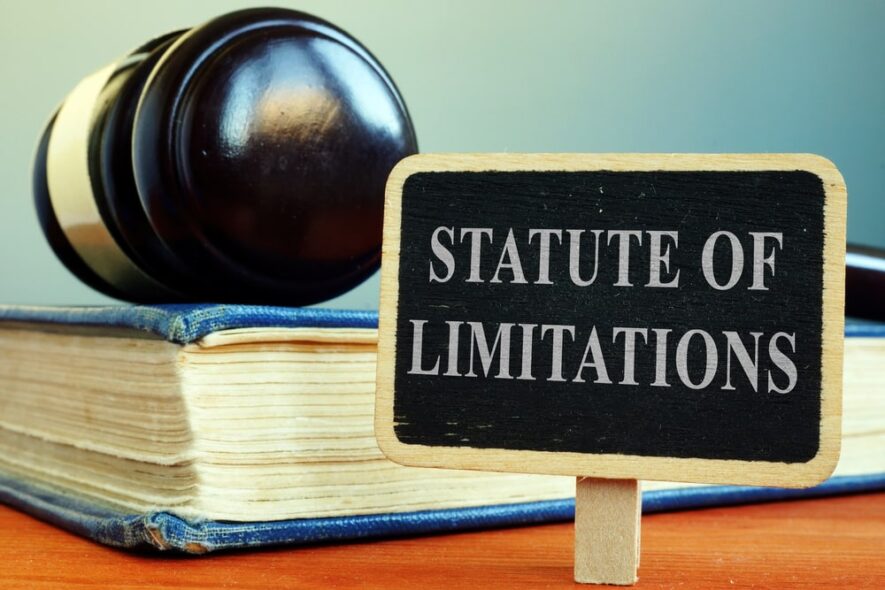
Have you ever wondered how long the IRS has to question and assess additional tax on your tax returns? For most taxpayers who reported all their income, the IRS has three years from the date of filing the returns to examine them. This period is termed the statute of limitations. But wait – as in all things taxes, it is not that clean cut. Here are some complications:
You file before the April due date – If you file before the April due date, the three-year statute of limitations still begins on the April due date. So filing early does not start an earlier running of the statute of limitations. For example, whether you file your 2021 return on February 15, 2022, or April 15, 2022, the statute does not start running until April 18, 2022 (that’s not a typo). The due date for 2021 returns was delayed from April 15 to April 18 because of a holiday in the District of Columbia (Emancipation Day) and a weekend, and the April 18th date applies even if you don’t live in DC. But there’s a further exception for residents of Massachusetts and Maine, the due date for 2021 returns is April 19, 2022, because of a holiday observed in both of those states. So, for residents in these two states, the statute of limitations for 2021 returns begins on the 19th.
You may recall that due to the Covid-19 pandemic, the IRS extended the original due date to May 17, 2021 for 2020 returns and to July 15, 2020 for 2019 returns. As a result, the statute of limitations for refunds expires May 17, 2024 for 2020 returns and July 15, 2023 for 2019 returns.
You file after the April due date – The assessment period for a late-filed return starts on the day after the actual filing, whether the lateness is due to a taxpayer’s delinquency, or under a filing extension granted by IRS. For example, say your 2021 return is on extension until October 17, 2022, and you file on September 1, 2022. The statute of limitations for further assessments by the IRS will end on September 2, 2025. So the earlier you file those extension returns, the sooner you start the running of the statute of limitations.
If you want to be cautious you may wish to retain verification of when the return was filed. For electronically filed returns, you can retain the confirmation from the IRS accepting the electronically filed return. If you file a paper return, proof of mailing can be obtained from the post office at the time you mail the return.
You file an amended tax return – If after filing an original tax return you subsequently discover you made an error, an amended return is used to make the correction to the original. The filing of the amended tax return does not extend the statute of limitation unless the amended return is filed within 60 days before the limitations period expires. If that occurs, the IRS generally has 60 days from the receipt of the return to assess additional tax.
You understated your income by more than 25% – When a taxpayer underreports their gross income by more than 25%, the three-year statute of limitations is increased to six years.
In determining if more than 25% of income has been omitted, capital gains and losses aren’t netted; only gains are taken into account. These “omissions” don’t include amounts for which adequate information is given on the return or attached statements. For this purpose, gross income, as it relates to a trade or business, means the total of the amounts received or accrued from the sale of goods or services, without reduction for the cost of those goods or services.
You file three years late – Suppose you procrastinate and you file your return three years or more after the April due date for that return. If you owe money, you will have to pay what you owe plus interest and late filing and late payment penalties. If you have a refund due, you will forfeit that refund. No refunds are issued three years after the filing due date.
You haven’t filed at all – In situations where no tax return has been filed or there’s fraud (the willful intent to evade tax), there is no time limit for the IRS to assess the tax or additional tax or to take court action.
10-year collection period – Once an assessment of tax has been made within the statutory period, the IRS may collect the tax within 10 years after the assessment.
Discarding tax records – Remember not to discard your tax records until after the statute has run its course. When disposing of old tax records, be careful not to discard records that prove the cost of items that have not been sold. For example, you may have placed home improvement records in with your annual receipts for the year the improvement was made. You don’t want to discard those records until the statute runs out for the year you sold the home. The same applies to purchase records for stocks, bonds, reinvested dividends, business assets, or anything you will sell in the future and need to prove the cost.
And a word of caution about discarding those tax records – to limit your exposure to ID theft, be sure to dispose of the documents safely and securely, such as by shredding paper files, or if the records are stored on your computer delete them, or by destroying the hard drive when you take the device out of service.

